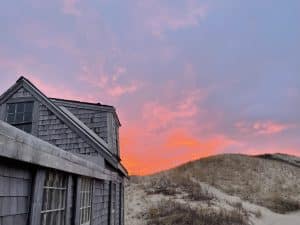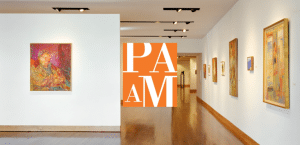Provincetown and Modernist Jewelry
by Steve Desroches
When it comes to Provincetown history it’s a bit like panning for gold. Just when you think you’ve heard or read every story there is, a shimmer appears revealing more of the town’s treasured past. In this case it’s a bit more silver and copper, though, as Provincetown’s significant role in the modernist jewelry movement gains more and more attention even further establishing the town and its art colony as an important crucible of the creative mind and artistic accomplishments.
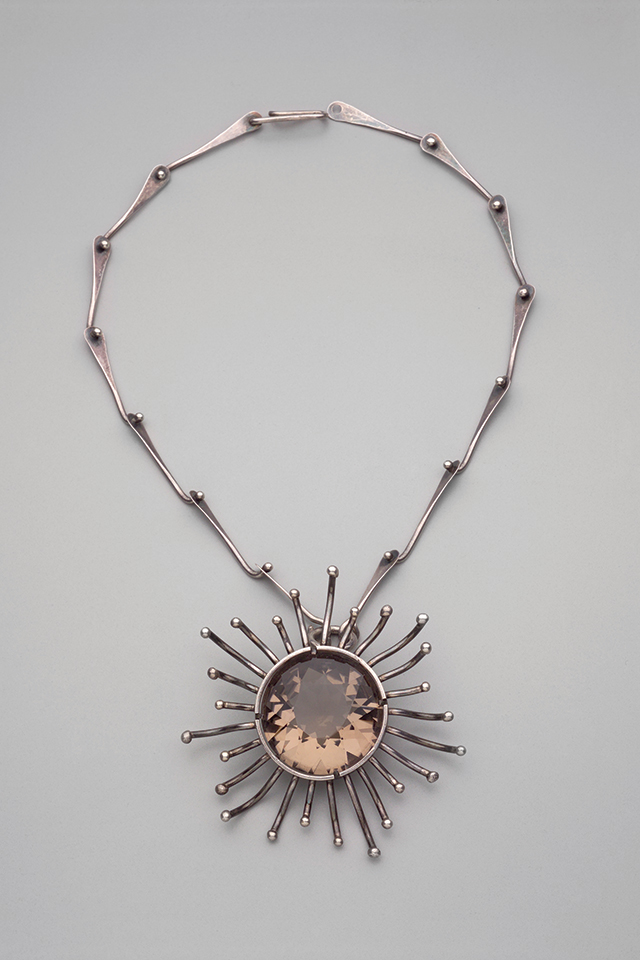
The Daphne Farago Collection, Photograph © Museum of Fine Arts, Boston
Ever since Charles Hawthorne established the Cape Cod School of Art in 1898, Provincetown and New York have had a direct creative pipeline, increasingly so once the Provincetown Players formed in 1915. In particular, Provincetown and Greenwich Village had a fluid synchronicity in art, politics, and theater, creating an incubator of ideas at the Cape tip. So come the 1940s when modernist artists began working in jewelry, the practice was most common and respected in the two northeastern locales. With the focus on form and design, modernist jewelers conscientiously worked with cheaper metals and materials to make the work more financially accessible to the everyday person. It very quickly became an integral part of the creative life of Provincetown.
“It was very much about finding the beauty in the everyday,” says Dr. Laura Johnson, associate curator at the Boston-based Historic New England, the oldest and largest regional heritage organization in the country. “And creating that beauty as wearable art.”
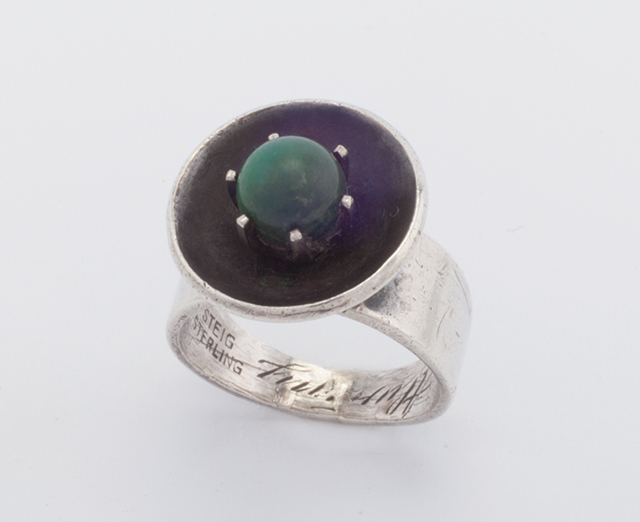
Galleries throughout Provincetown featured modernist jewelry, both as art on display and more affordable options of work by artists who also worked in painting or sculpture. In that period, which art historians place from the 1940s to the 1960s, artists known in other mediums embraced modernist jewelry. Jules Brenner, Harry Steig, Paul Lobel, and Ed Wiener, became stand outs, as did Chaim Gross (who created the statue Tourists, which stands in front of the Provincetown Public Library), Phyllis and Israel “Izzy” Sklar (well known for the delightful ramshackle home studio in the West End), and Carl Tasha, whose belt buckles are still a staple of Provincetown fashion.
“Wearing modernist jewelry was a way to show your artistic beliefs,” says Dr. Emily Stoerher, curator of jewelry at the Museum of Fine Arts, Boston, who gave a lecture on modernist jewelry at the Provincetown Public Library last summer.
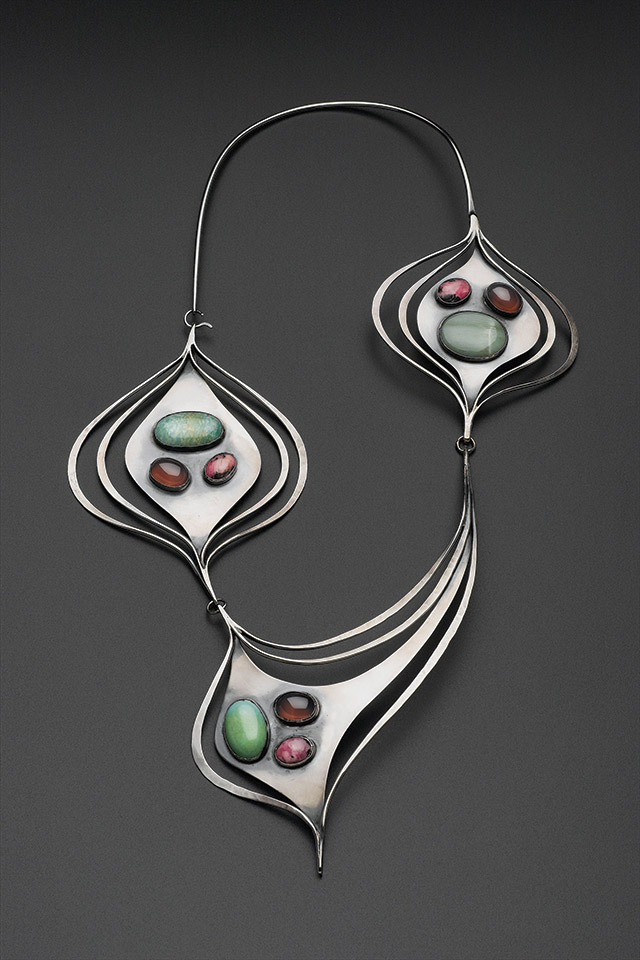
Despite the popularity of the art form and its celebrated practitioners, the movement began to fade from public consciousness as well as in academia and art criticism. That’s despite modernist jewelry bursting onto the scene with shows at the Museum of Modern Art in New York in 1946 and at the Walker Art Center in Minneapolis in 1948. It was, however, a smaller show that is in part responsible for the renewed attention. In 2003, Dr. Claire Sprague and Irma Ruckstuhl curated The Jeweler’s Art: Four Provincetown Silversmiths, 1940s-1960s at the Provincetown Art Association and Museum, featuring the work of Lobel, Steig, Wiener, and Brenner. It was then that Stephen Borkowski, local historian and member of the boards of multiple cultural organizations (including the Library, the Pilgrim Monument and Provincetown Museum, PAAM, and the town’s art commission), learned about this movement and became one of its most vocal cheerleaders.
“It was just something in the air,” says Borkowski. “A lot of them were doing jewelry as a lark. Many learned it rather casually. I still think it’s undervalued. It’s like the white line prints. People dismissed them as crafts. That kind of thinking changed, and so to it should be with the modernist jewelry. It’s an element of history that to a degree is still largely unexplored.”
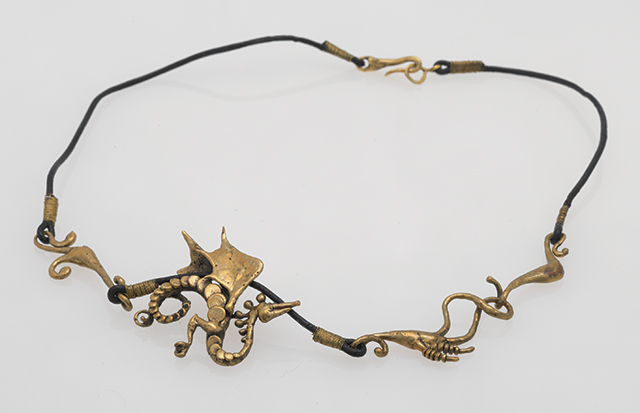
Through his connections with other institutions, and donating his own collection to museums like Historic New England, the Museum of Fine Arts, Boston, and the Yale University Art Gallery, Provincetown modernist jewelry has once again garnered the attention of curators as both PAAM and the Monument expand their own holdings. Johnson credits Borkowski with introducing her to Provincetown modernist jewelers, and she incorporated eight pieces of their work in the exhibition Mementos: Jewelry of Life and Love from Historic New England, which opens at the Eustis Estate Museum and Study Center in Milton, Mass., on May 17.
“There are a lot of exciting things that happened in Provincetown that have not necessarily received a lot of attention,” says Johnson. “So I’m happy to climb to the rooftops to shout it out and let people know that.”
Modernist jewelry has of course not gone completely ignored, with the aforementioned institutions collecting the work as well as the New-York Historical Society, the Museum of Art and Design, the Cooper Hewitt, the Smithsonian Design Museum, and at the Julie Heller Gallery in Provincetown. And in particular, the MFA in Boston has one of the largest jewelry collections in the world, spanning 6,000 years and over 20,000 pieces. Stoerher, who is the only solely jewelry curator in the country, notes that the MFA became a significant home of modernist work in 2006 when Daphne Farago donated a breathtaking collection to the museum, which included 650 works of contemporary jewelry, some of which is on display in the American Wing of the Huntington Avenue museum. Still, with all her experience and knowledge, Stoerher says that there is so much more to be discovered about the modernist jewelry movement, and what came after, in New York and especially Provincetown.
“There is still a lot to learn about jewelers in Provincetown and what has gone on since the mid century,” says Stoerher. “Not a lot is written about it and a lot is still unknown.”






